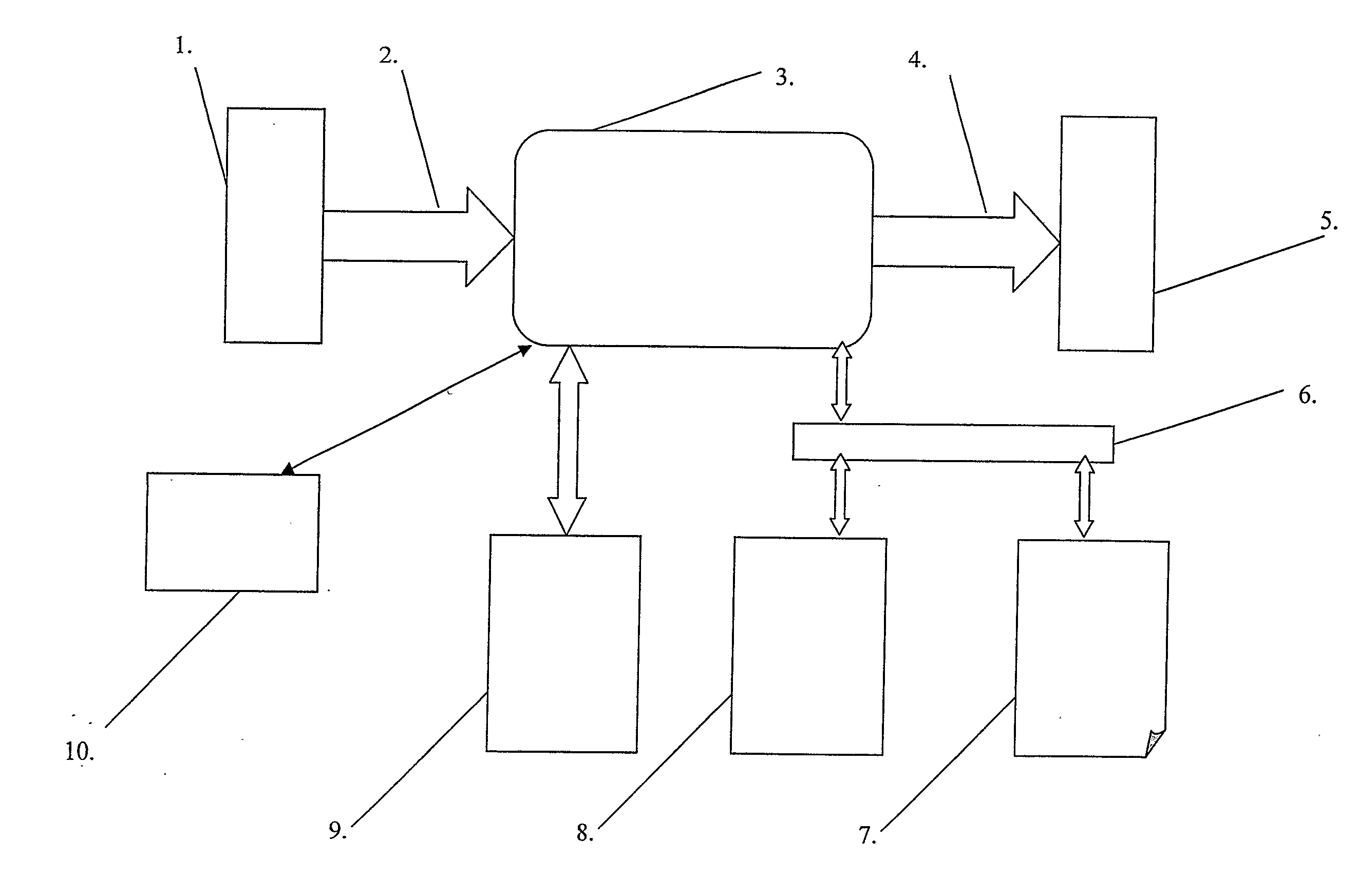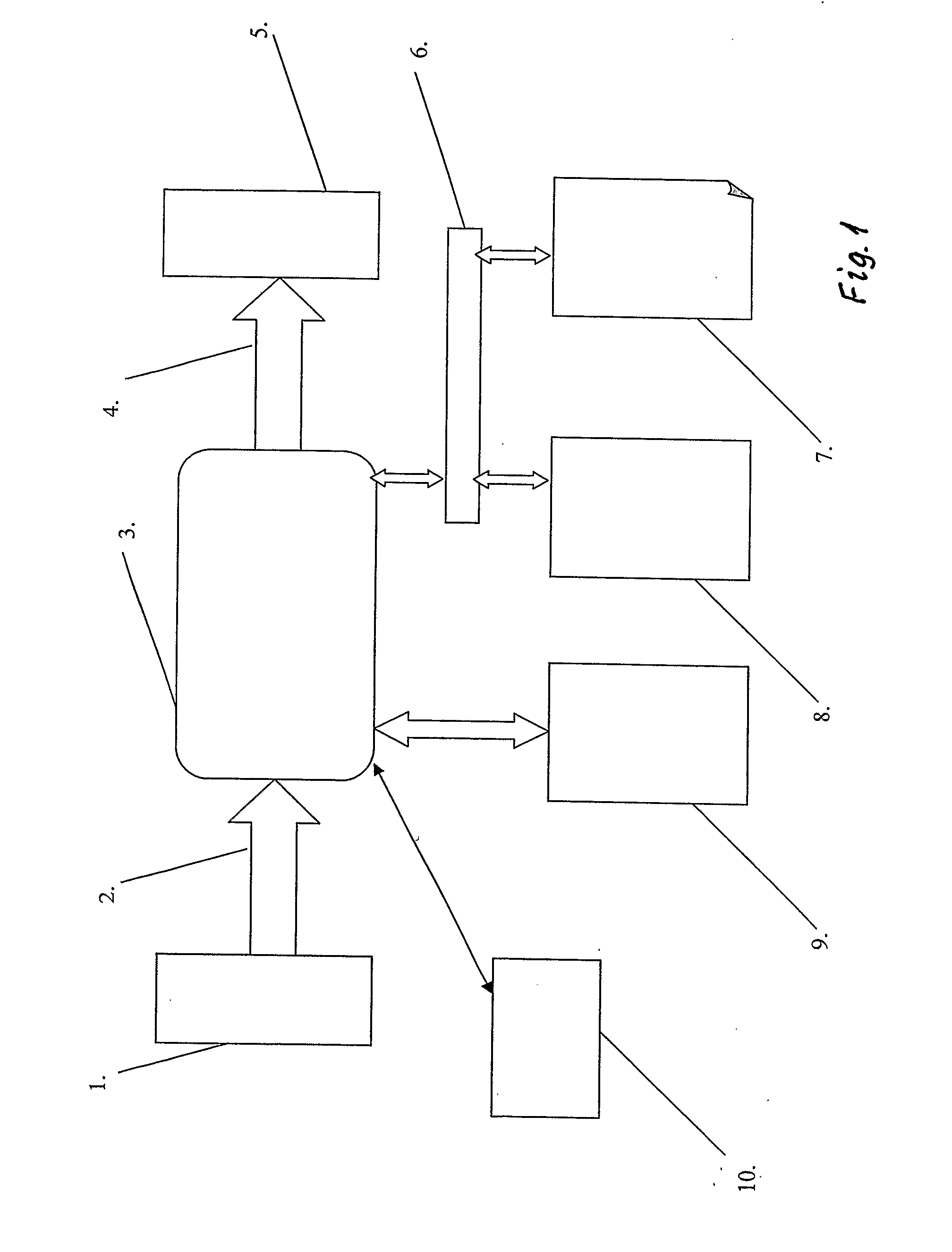Symmetric key cryptographic method and apparatus for information encryption and decryption
a cryptographic method and information encryption technology, applied in the field of information encryption and decryption, can solve the problems of drawback in real-time applications, the most important and still unsolved problem of broadcasting companies, and the same security problems of atanasiu systems
- Summary
- Abstract
- Description
- Claims
- Application Information
AI Technical Summary
Benefits of technology
Problems solved by technology
Method used
Image
Examples
example
[0094]Let the transition matrix of the key-automaton (where the initial state is 0) be the following:
4130304122
[0095]For simplicity suppose that the (binary) character set of the plaintext is {0,1}. Let us assign to the character 0 the final state 0, and to the character 1 the final state 1. Let Li,j denote, for any pair i,j from {0,1,2,3,4}, the set of all input signal strings that take the automaton from its state i to state j, so that none of the intermediate states is a final state.
[0096]Encryption
[0097]Suppose that the device is in encryption mode, so the encryption program is stored in the program memory (9). There is space allocated in the data memory (8) to the current state of the key-automaton (current state), to the state to be reached by the key-automaton (state to be reached), to a work array, the size of which (in bits) is also the maximal block length of the encrypted message, and a pointer pointing to the element of the array under processing. Suppose that the size o...
PUM
 Login to View More
Login to View More Abstract
Description
Claims
Application Information
 Login to View More
Login to View More - R&D
- Intellectual Property
- Life Sciences
- Materials
- Tech Scout
- Unparalleled Data Quality
- Higher Quality Content
- 60% Fewer Hallucinations
Browse by: Latest US Patents, China's latest patents, Technical Efficacy Thesaurus, Application Domain, Technology Topic, Popular Technical Reports.
© 2025 PatSnap. All rights reserved.Legal|Privacy policy|Modern Slavery Act Transparency Statement|Sitemap|About US| Contact US: help@patsnap.com


